Qualys & ServiceNow: Automating Risk-Driven Remediation for Container Security

Table of Contents
- Introducing the Qualys & ServiceNow Integration
- Expanding Attack Surfaces and Challenges in Container Security
- What an Effective Vulnerability Management Solution Needs
- Key Features: Bringing Qualys & ServiceNow Together
- How the Integration Works: A Simple 3-Step Workflow
- How to Get Started
- Join Our Webinar: Learn More
Introducing the Qualys & ServiceNow Integration
Qualys and ServiceNow are redefining container vulnerability management with an integrated approach that streamlines remediation for highly ephemeral containerized workloads. Organizations can now seamlessly detect, prioritize, and remediate vulnerabilities at scale using Qualys’ threat-informed, runtime-aware security intelligence alongside ServiceNow’s enterprise-grade workflow automation. This partnership ensures vulnerabilities in ephemeral, hard-to-track assets are remediated by the right owners while automating creation, prioritization, assignment, deferral and closure workflows based on scans, threat intelligence, and runtime context. This allows organizations to systematically track and reduce risk across containerized environments.
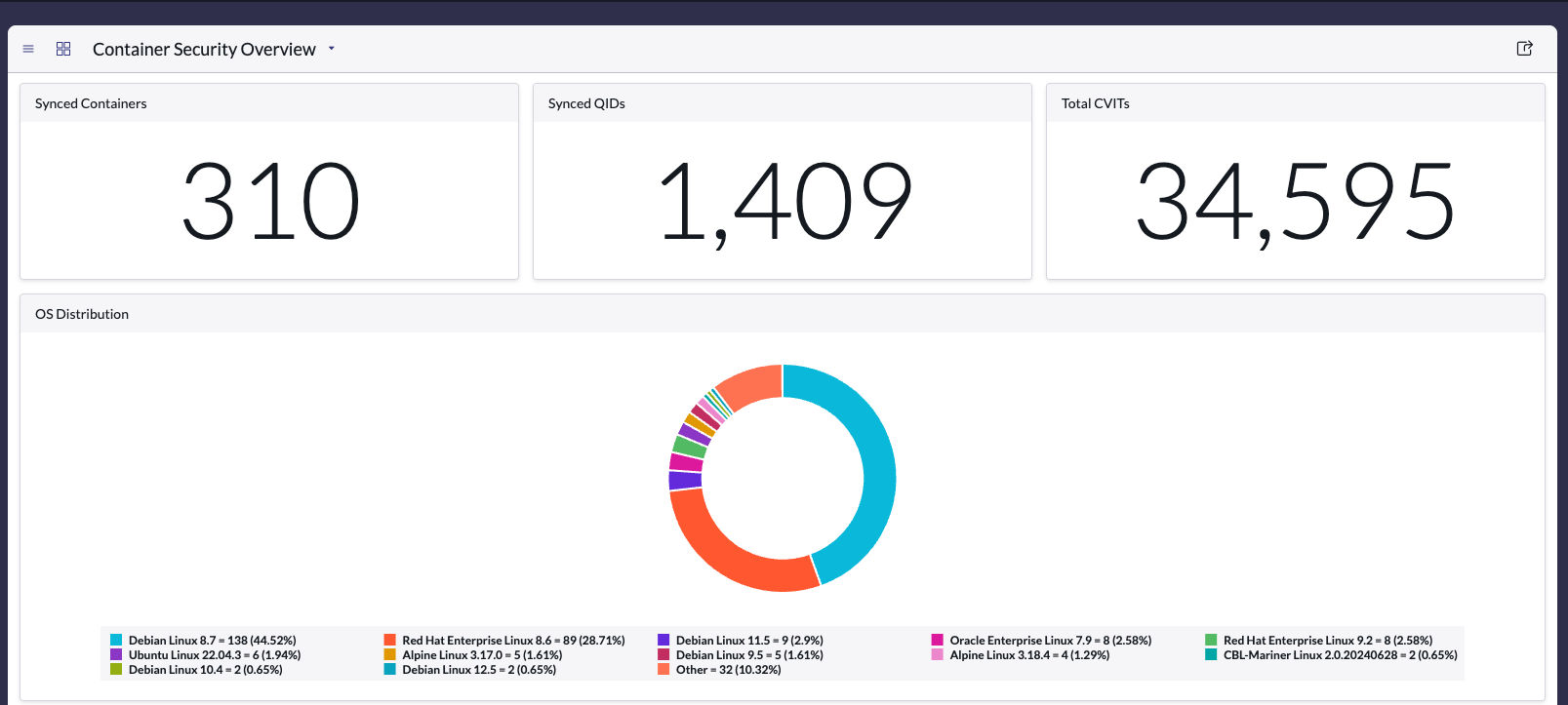
Expanding Attack Surfaces and Challenges in Container Security
As organizations rapidly adopt containerized applications, securing these environments presents unique challenges. Unlike traditional infrastructure, containers are highly dynamic and ephemeral and often lack clear ownership for remediation. Security teams face difficulties such as:
- Expanding Attack Surfaces – With containers and microservices, both the attack surface and the volume of vulnerabilities expand significantly, increasing risk exposure.
- High Noise Levels – The sheer volume of vulnerabilities, combined with the ephemeral nature of containerized assets, creates excessive noise, making it difficult to identify and prioritize real risks.
- Lack of Runtime Context – Without business-aware prioritization, teams struggle to focus on the most critical threats.
- Ownership Challenges – Since containers cannot be patched in place, the teams responsible for patching often differ from those deploying them, making ownership attribution difficult and complicating systematic remediation tracking.
What an Effective Vulnerability Management Solution Needs
To truly secure containerized environments, a modern vulnerability management approach must:
- Seamlessly Integrate With Existing Workflows – Vulnerability management teams already use ServiceNow to track traditional vulnerabilities and collaborate with IT. Extending this familiar workflow to developers ensures consistent tooling, streamlined remediation tracking, and improved collaboration for timely vulnerability resolution.
- Provide contextual, risk-based prioritization – Developers need to understand why a vulnerability requires immediate attention. Is there an active exploit? Does it impact a critical business asset?
- Deliver actionable remediation guidance – Beyond CVE listings, teams need clear, noise-free patch recommendations that help reduce risk as efficiently as possible.
- Automate remediation tracking – Security teams need visibility into progress, with automated ticketing, assignment, and closure to streamline workflows.
This is where Qualys and ServiceNow come together to reduce the vulnerability burden on security teams while accelerating remediation.
Key Features: Bringing Qualys & ServiceNow Together
1. Threat-Informed, Business-Aware Risk Prioritization (TruRisk™)
Qualys quantifies risk using a combination of real-time threat intelligence, exploitability data, and business impact. This ensures teams focus on vulnerabilities that truly matter, reducing wasted effort on low-risk findings. Unlike traditional vulnerability management solutions or standalone Cloud Detection and Response (CDR) tools that rely on stitched-together data, TruRisk™ provides a runtime-aware, threat-informed approach to security.
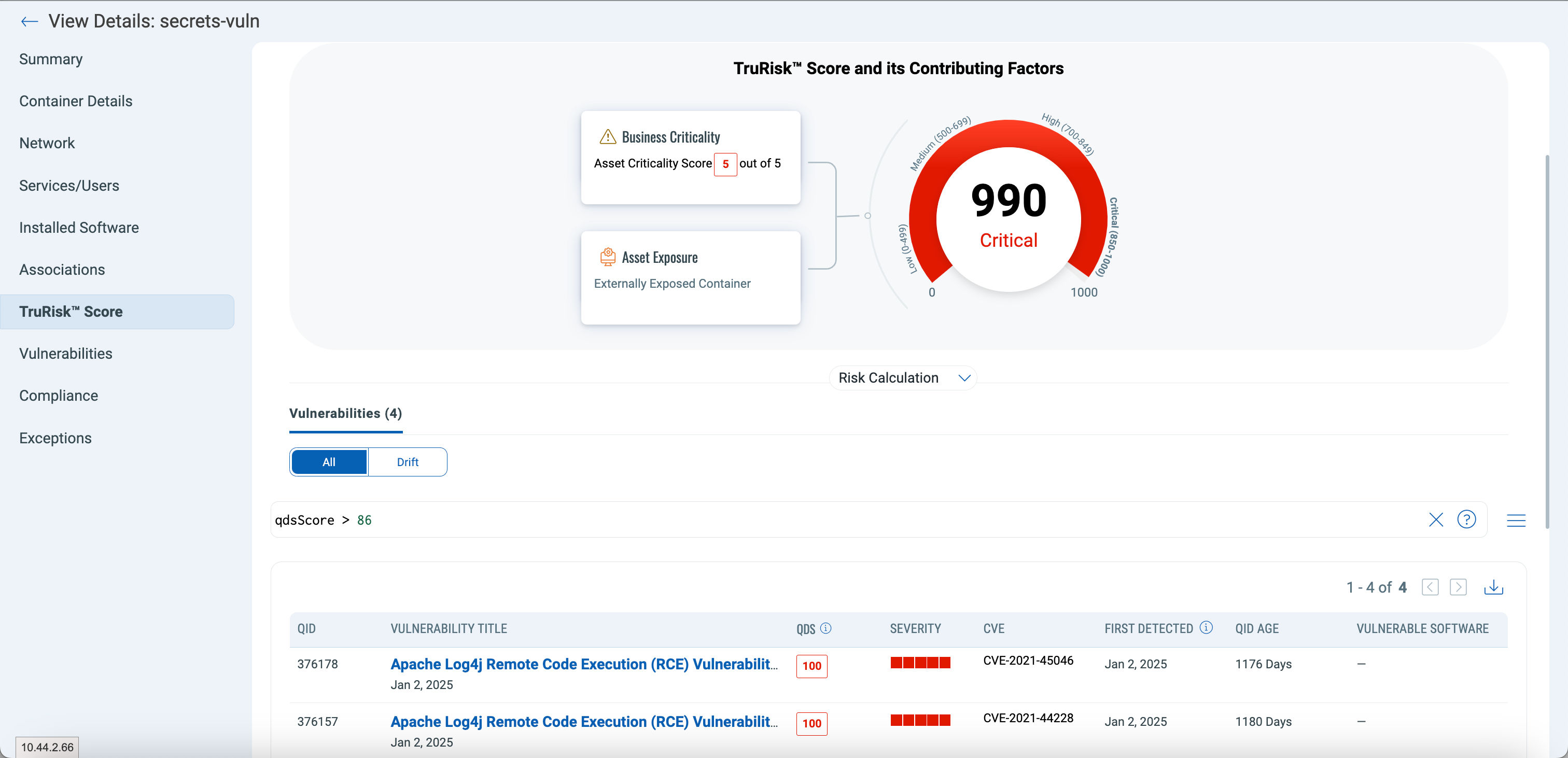
2. Noise-Free, Actionable Findings with Developer Context
ServiceNow ensures that developers only see Cloud Vulnerability Items (CVITs) from Qualys detections that require immediate action, reducing alert fatigue and maintaining focus on the most critical risks. The platform streamlines remediation by embedding patch guidance and resolution steps from Qualys, ensuring teams have the necessary context to act quickly and efficiently.
In ServiceNow, developers and security analysts can:
- Track assigned CVITs, understand business context and severity, and manage exceptions and mitigations in the NOW platform.
- Automatically close CVITs with validation from Qualys once vulnerabilities are remediated, keeping the backlog clean and workflows streamlined.
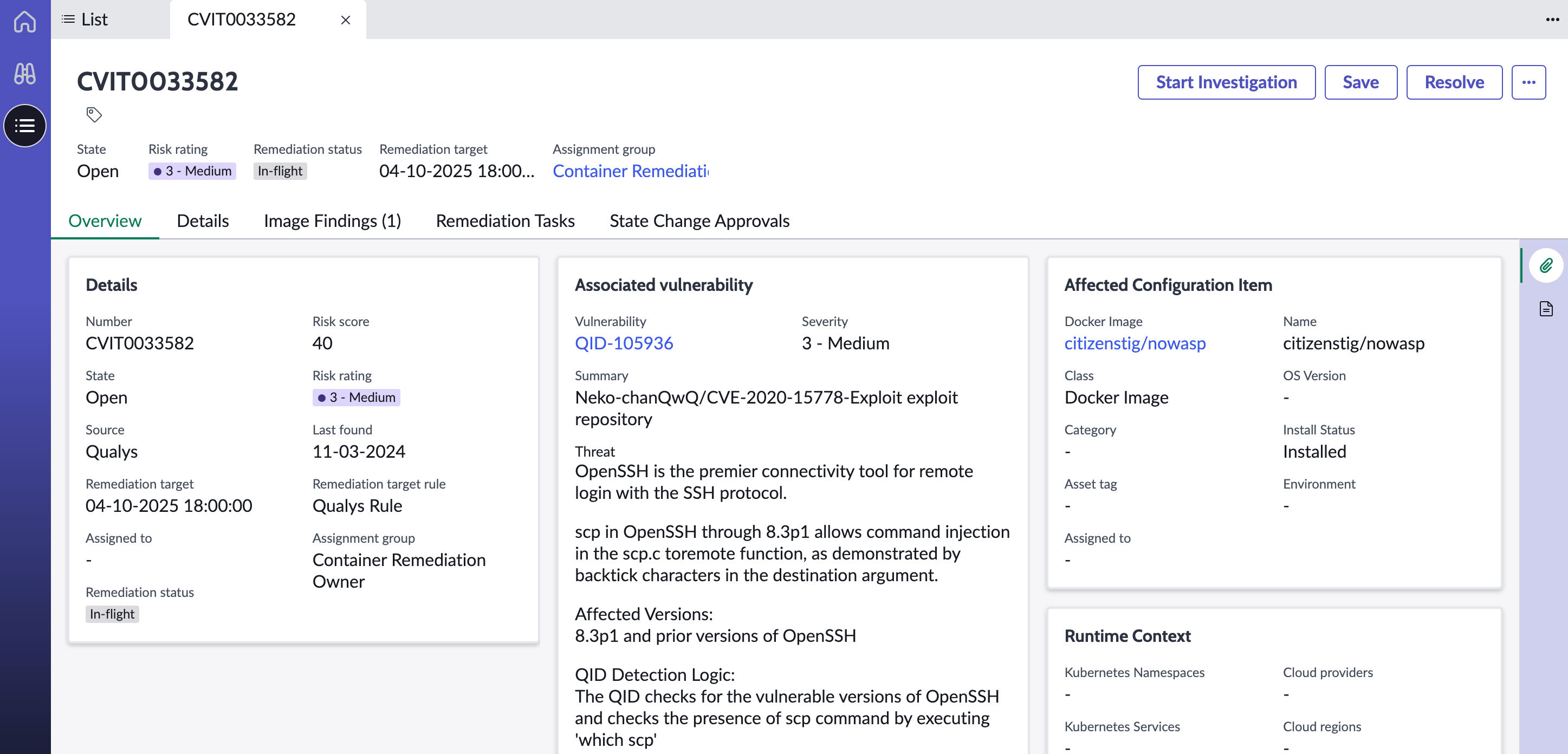
3. Automated Remediation Workflows & Exception Management
Through ServiceNow, Qualys automatically assigns vulnerabilities to the right development or security teams, ensuring frictionless remediation workflows. Security teams can:
- Set assignment rules to automatically direct vulnerabilities to the right owners.
- Establish remediation rules to enforce compliance.
- Utilize exception management to defer issues when necessary.
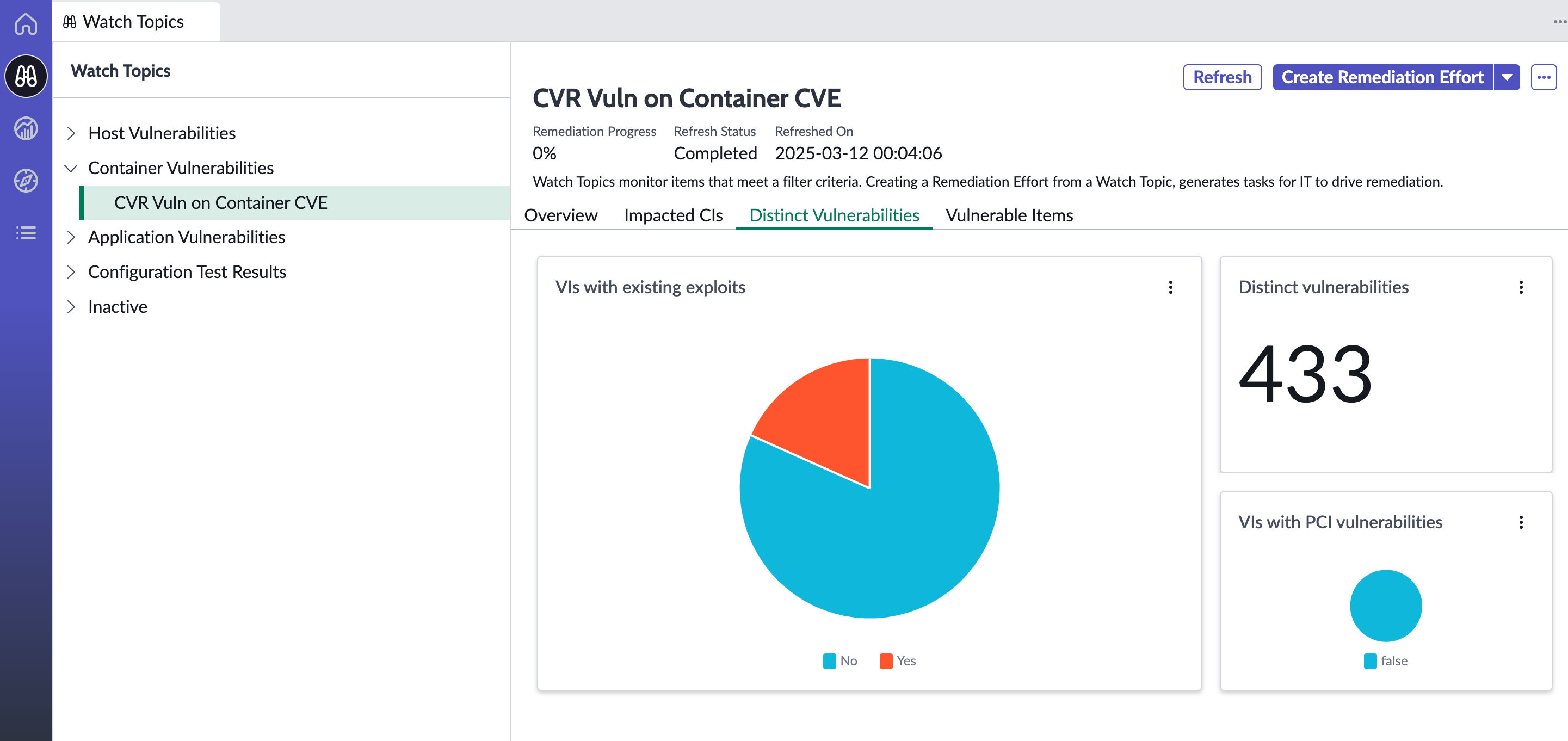
4. End-to-End Remediation Tracking & Actionable Metrics
By integrating Qualys and ServiceNow, organizations gain actionable remediation metrics, including:
- Mean Time to Remediate (MTTR)
- Average closure time
- Exception trends and policy compliance tracking
These insights allow security and IT teams to continuously improve remediation efficiency and reduce risk exposure.
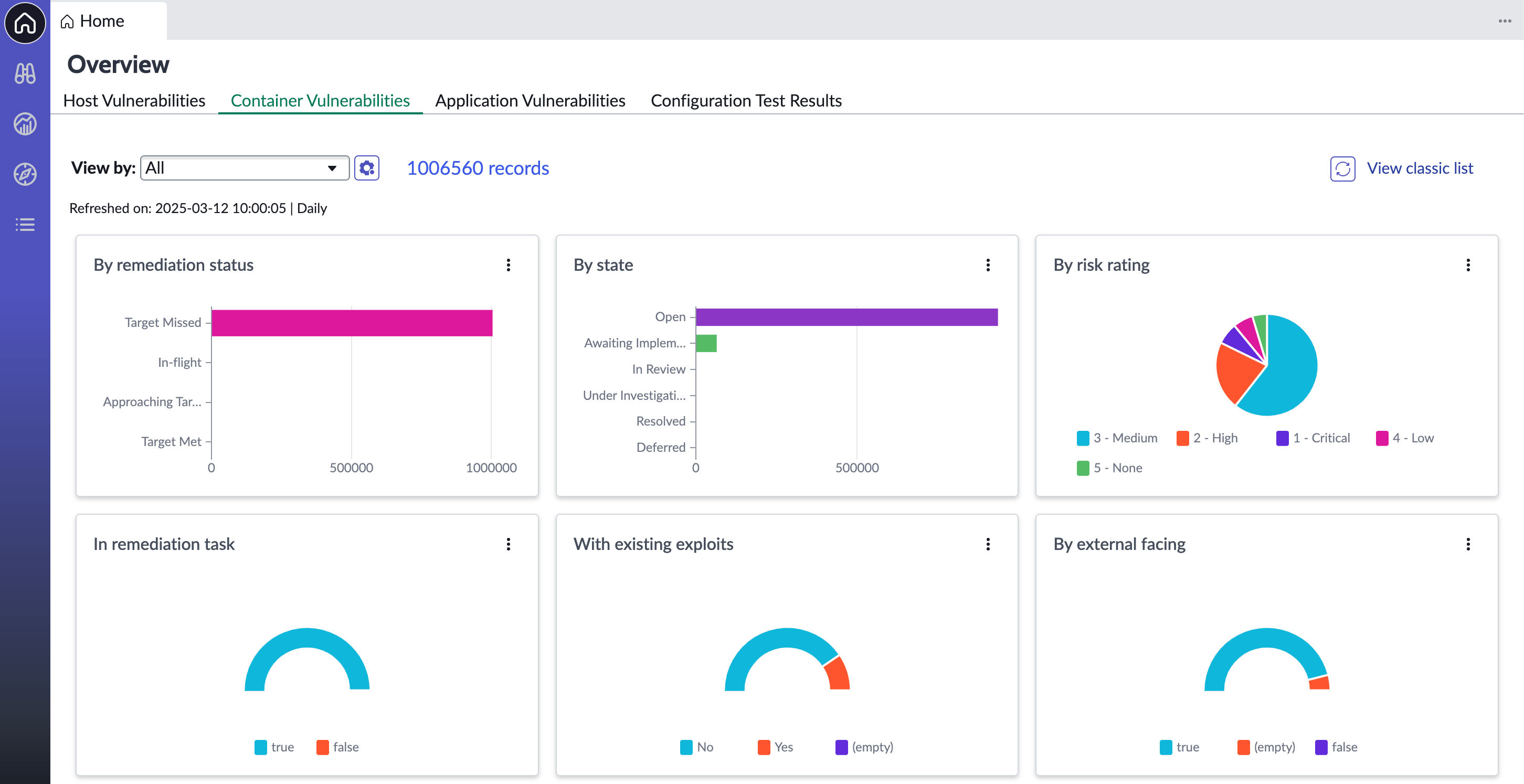
How the Integration Works: A Simple 3-Step Workflow
To illustrate the simplicity and power of this integration, here’s a high-level workflow of how Qualys and ServiceNow work together:
1. Detect & Prioritize – Qualys TruRisk™ identifies container vulnerabilities, quantifies risk, and filters out noise. ServiceNow Container Vulnerability Response automatically groups relevant detections by owner and prioritizes by incorporating business context. Containers, images, and QIDs are synced to ServiceNow.
2. Assign & Track – ServiceNow applies rules to auto-assign tickets to the right owner. QIDs are mapped to patchable CVEs to enable development teams to take action with context.
3. Remediate & Automate – Development teams receive actionable guidance within ServiceNow, implement fixes, and have tickets auto-closed upon validation.
This seamless flow eliminates bottlenecks, reduces manual effort, and ensures that security vulnerabilities are addressed efficiently.
How to Get Started
The Qualys Container Security integration with ServiceNow is available today in the ServiceNow Store. Have container security challenges or interested in speaking to an expert? We’re here to help—reach out to us.
Join Our Webinar: Learn More
To see this integration in action and learn how to enhance your container security strategy, join our upcoming webinar with ServiceNow:
📅 Date: March 19, 2024
🕘 Time: 11:00am PDT
📍 Location: Virtual Webinar
Register Today
With Qualys and ServiceNow, security and IT teams can finally move beyond reactive security and embrace a proactive, automated approach to container vulnerability management. Get started today and take control of your container security posture.